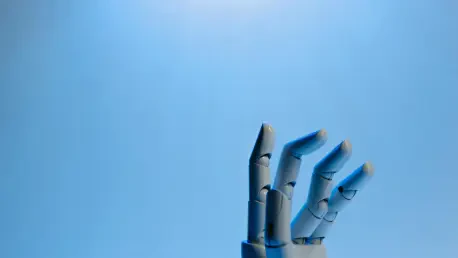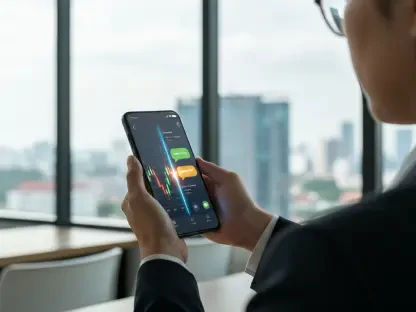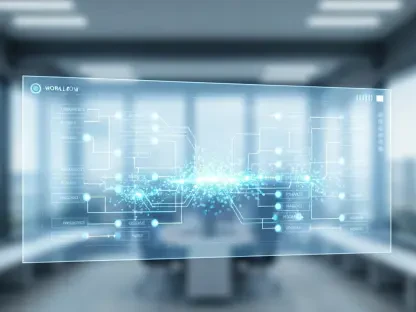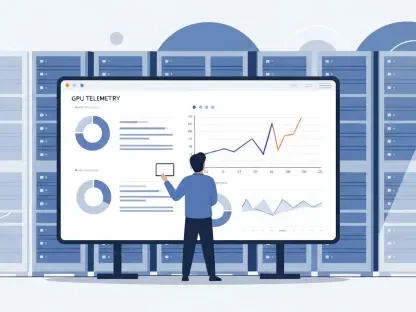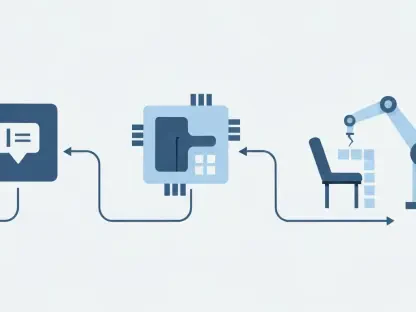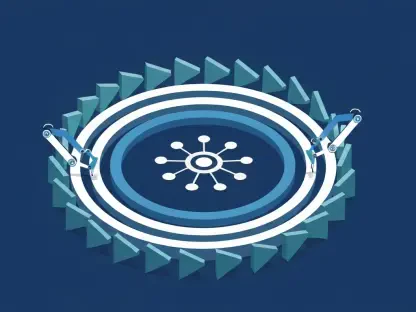Oscar Vail, a distinguished expert in technology, has been making significant strides in areas including robotics and quantum computing. In a groundbreaking development, he and his team have created robots that demonstrate an ability to grow, heal, and adapt by integrating materials from their environment or other robots. This cutting-edge approach, known as “Robot Metabolism,” could fundamentally transform the future of robotics and their practical applications.
Can you explain what “Robot Metabolism” is and how it works in the context of your research?
“Robot Metabolism” is a fascinating concept where robots have the ability to physically grow and repair themselves by absorbing and reusing parts from their environment or from other machines. This approach is inspired by biological systems that adapt and sustain themselves by integrating resources around them. In our research, we’ve developed a system where robots can metabolize components to improve their physical capabilities and autonomy.
What inspired the development of robots that can grow, heal, and adapt themselves?
The inspiration largely comes from the natural world. Biological entities are incredibly efficient at using resources to grow, adapt, and repair themselves. We wanted to translate this adaptability to robotics, enabling machines to maintain themselves independently and become more versatile in their capabilities. It’s about bridging the gap between cognitive and physical advancements in robots.
How do robots absorb and reuse parts from their environment or other machines?
The process involves a modular approach where robots are built from units that can disassemble and reassemble in various configurations. These units can absorb similar modules from other robots or their surroundings, reconfiguring themselves to enhance their functionality. By seamlessly integrating these new parts, they can adapt to new challenges or repair themselves when necessary.
Can you describe how the Truss Link modules function?
Truss Links are essentially bar-shaped modules equipped with magnetic connectors. These modules can expand, contract, and connect at various angles, allowing them to form complex structures. They mimic the process of self-assembly seen in nature, building intricate shapes and forms in response to their environment or tasks they’re designed for.
How do Truss Links self-assemble into complex structures?
The Truss Links are designed to interact with each other using their magnetic connectors. This allows them to attach and detach easily, forming two-dimensional shapes that can evolve into three-dimensional structures. The self-assembly process is directed by the robot’s needs, adapting to the task at hand and enabling the robot to “grow.”
What advantages does a robot gain by integrating new parts from its surroundings?
By integrating components from their environment, robots can enhance their capabilities in real-time. This adaptability means they can tackle unforeseen tasks without external intervention. It’s akin to biological organisms adjusting to new food sources or environmental conditions, which can be crucial in dynamic or hazardous environments like space or disaster zones.
How does “machine metabolism” differ from traditional robot design approaches?
Traditional robots are often built as closed systems with fixed structures. “Machine metabolism” introduces a modular flexibility, where robots are not statically defined. They can modify their physical form and function by incorporating new elements, pushing beyond the limitations of traditional designs.
Why do you believe modularity is key for robots to adapt and grow like biological organisms?
Modularity is essential because it allows for flexibility and scalability. Just like biological organisms use modular building blocks like amino acids to adapt and evolve, robots utilizing a modular approach can reconfigure and rebuild themselves to meet different requirements and challenges, making them more robust and versatile.
In what specific applications do you foresee initial implementations of Robot Metabolism?
Initial implementations could be in fields that require rapid adaptability, such as disaster recovery and space exploration. Imagine a robot on a disaster site that can quickly modify itself to navigate debris or in space missions where it can adapt to different terrains or repair itself without human aid.
How could this technology improve disaster recovery and space exploration efforts?
In disaster recovery, robots with “machine metabolism” could traverse challenging terrains, adapt to intricate rescue tasks, and even repair damage on-site, improving efficiency and effectiveness. For space exploration, these adaptable robots can handle a variety of extraterrestrial conditions, self-repair, and evolve their capabilities as missions progress, reducing the need for human intervention.
What are some potential challenges in developing autonomous robots that can repair and sustain themselves?
The challenges involve ensuring the reliability and safety of these systems. The complexity of designing robust self-assembling mechanisms and the intricacies of developing algorithms that accurately guide this process are considerable. Moreover, ensuring these robots can operate without unexpected behaviors in diverse environments is critical.
What are the ecological implications of robots that can self-sustain and adapt?
There are both positive and negative implications. On the one hand, these robots could reduce waste by recycling parts and enhancing efficiency in resource use. On the other, there is the risk of them impacting ecosystems if not managed properly, akin to invasive species. Balancing innovation with ecological responsibility is key.
Are there any ethical concerns tied to self-reproducing robots?
Certainly. The prospect of self-reproducing robots raises concerns about control, security, and unintended consequences. Questions about their autonomy, the extent of their decision-making capabilities, and potential misuse in nefarious scenarios become significant ethical considerations.
How do you envision the future of robotics in terms of their autonomy and integration into society?
I see robots becoming integral members of society, working alongside humans to improve quality of life. They will likely take on tasks ranging from mundane chores to complex problem-solving activities, thanks to increased autonomy and smarter integration into societal frameworks. Ensuring ethical deployment while maintaining human oversight will be crucial.
Who will be responsible for maintaining these robots if they are capable of self-maintenance?
Primarily, the robots themselves would manage their maintenance, addressing fundamental repairs and upgrades as needed. Human oversight might still be necessary for ensuring that operations align with broader human values and for intervening in cases where robots encounter tasks beyond their programmed capacity.
What role do you think AI will play in the physical development of robots in the future?
AI will undoubtedly drive the development of more sophisticated, adaptable robots. Its role will be to provide these machines with the intelligence needed not just to make decisions but also to adapt their physical structures to optimize performance in real-time, responding to their environment dynamically and efficiently.
How close are we to creating robots that can independently build other machines or physical structures?
We’re on the cusp of this reality. The foundational technology for modular self-assembly and cognitive advancements through AI is in place. However, practical large-scale implementation will take time as we refine the reliability and complexity of these self-building capabilities.
What precautions should be taken to prevent scenarios like those depicted in science fiction involving autonomous robots?
It comes down to robust ethical frameworks and failsafe mechanisms embedded within the systems. Continuous monitoring, regulatory guidelines, and transparency in development are fundamental. It’s imperative to ensure machines act within predefined human-centric boundaries while being capable of independent function.
Can you elaborate on the current limitations of robot bodies compared to their cognitive advances?
Robot minds have seen significant advances due to AI breakthroughs, yet their physical forms remain limited by rigid, non-adaptive constructions. The gap lies in creating bodies that match cognitive adaptability with comparable physical flexibility, something we hope to bridge through technologies like “robot metabolism.”
What steps are being taken to ensure this technology is used responsibly and safely?
We’re working on embedding ethical AI practices and developing regulatory standards within robotic systems. Engaging with interdisciplinary teams, including ethicists and legal experts, ensures diverse perspectives guide development. Fostering public dialogue enhances accountability and promotes understanding of these advancements.
What is your forecast for the future of robotics?
I foresee a future where robots are not just tools but partners, enhancing human capabilities and environmental sustainability. With advancements in self-assembling technologies, AI, and responsible innovation, they can become key players in addressing global challenges, from ecological conservation to space exploration, all while maintaining ethical integrity.
